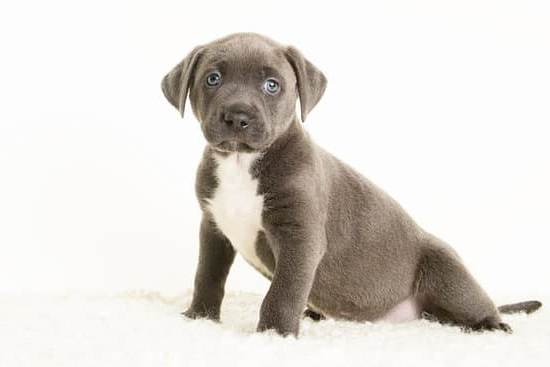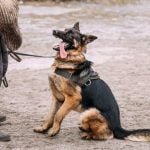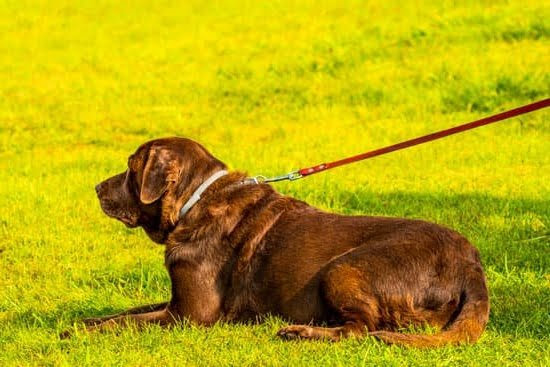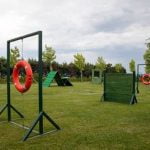Are you struggling with your dog’s habit of jumping on cars? In this article, we will explore effective methods for training your furry friend to avoid this behavior. We will discuss the reasons why dogs are drawn to cars and the potential dangers associated with jumping on them. Additionally, we will provide practical tips and techniques to help you address and manage this challenging behavior.
When it comes to understanding why dogs are attracted to cars, it is essential to recognize that their behavior is often driven by curiosity, territorial instinct, or a desire for attention. However, allowing your dog to jump on cars can pose significant risks, such as damage to the vehicle’s exterior, scratches and dents, or even the potential for injury if the dog slips and falls.
By gaining insight into your dog’s motivations for engaging in this behavior, you can develop a more effective training strategy to address it.
In the following sections, we will delve into positive reinforcement training techniques, consistent commands, supervised exposure, environmental management strategies, exercise and mental stimulation activities, as well as seeking professional assistance if needed. By applying these approaches with patience and persistence, you can work towards successfully training your dog not to jump on cars while ensuring their safety and well-being.
Positive Reinforcement Training
When it comes to training your dog not to jump on cars, positive reinforcement techniques can be highly effective in redirecting their behavior. Positive reinforcement involves rewarding desired behaviors to encourage their repetition, making it a valuable tool in teaching your dog alternative behaviors to jumping on cars.
Here are some positive reinforcement techniques that can be utilized when training your dog not to jump on cars:
1. Reward-based Training: Use treats, praise, and toys as rewards for your dog when they exhibit appropriate behavior around cars. For example, if your dog remains calm and focused on you instead of jumping on a car, immediately reward them with a treat or verbal praise to reinforce the desired behavior.
2. Clicker Training: Incorporating a clicker into your training sessions can help mark the exact moment when your dog displays the desired behavior. Pair the click with a treat or praise to create a positive association with not jumping on cars.
3. Desensitization: Gradually exposing your dog to cars at a distance and rewarding them for remaining calm and ignoring the vehicles can help desensitize them to the trigger of jumping on cars.
By consistently using these positive reinforcement techniques, you can effectively train your dog not to jump on cars while strengthening the bond between you and your furry companion. Remember to be patient and persistent in your training efforts, as it may take time for your dog to fully understand and exhibit the desired behavior around cars.
Consistent Commands
Use of Clear and Consistent Commands
When training your dog not to jump on cars, it is essential to establish clear and consistent commands to communicate what behavior is expected. Using simple and direct commands such as “off” or “leave it” can help your dog understand that jumping on cars is not acceptable behavior. It is important to use the same command consistently every time your dog exhibits the unwanted behavior.
Reinforcement of Commands
Consistency in reinforcing commands is crucial when training your dog not to jump on cars. When your dog successfully follows the command to not jump on a car, praise and reward them with treats or verbal praise.
Positive reinforcement will help reinforce the desired behavior and encourage your dog to continue obeying the command in the future. On the other hand, if your dog does attempt to jump on a car, redirect their attention with a different command and immediately remove them from the situation.
Training Sessions for Command Reinforcement
Regular training sessions focused on consistent commands are key in teaching your dog not to jump on cars. Set aside dedicated time each day for short training sessions where you practice reinforcing commands related to car behavior. These sessions should be positive and rewarding for your dog, helping them associate following commands with positive outcomes. With patience and dedication, consistent reinforcement of clear commands can effectively discourage jumping on cars in the long run.
By implementing these strategies for consistent commands, you can effectively teach your dog not to jump on cars while strengthening obedience and communication between you and your pet.
Supervised Exposure
Introduction to Supervised Exposure
Supervised exposure is an essential element in training your dog not to jump on cars. This step involves gradually introducing your dog to cars in a controlled environment, allowing them to practice appropriate behavior while under your supervision. By taking this approach, you can help your dog understand the expectations around vehicles and reinforce positive conduct.
Training Techniques for Supervised Exposure
When implementing supervised exposure, it’s crucial to start with small steps and gradually increase the level of difficulty. Begin by having your dog on a leash and walking them near parked cars. Use treats and verbal praise to reward calm behavior and gently redirect any attempts to jump. As your dog becomes more comfortable, you can progress to walking past moving vehicles, always maintaining control through the leash.
Benefits of Supervised Exposure
Supervised exposure allows you to directly address the problem behavior in a safe and controlled setting. It gives your dog the opportunity to learn appropriate responses around cars and helps build their confidence in different scenarios. By consistently practicing supervised exposure, you can effectively teach your dog not to jump on cars while reinforcing positive behaviors.
Environmental Management
Dogs are naturally curious animals, and their interest in cars can lead to potentially dangerous behaviors such as jumping on them. In this section, we will discuss how to implement environmental management techniques to prevent dogs from accessing cars when unsupervised.
One effective method of environmental management is to use barriers such as gates or fences to restrict your dog’s access to areas where cars are parked. By creating physical boundaries, you can prevent your dog from even getting close to the cars, reducing the temptation to jump on them.
Another approach is to use deterrents to discourage your dog from approaching cars. This can include using taste deterrent sprays on the car exterior or placing motion-activated alarms near the vehicles. These methods provide negative associations with the cars, leading your dog to avoid them altogether.
It’s important to remember that environmental management should be combined with other training techniques for a holistic approach. By utilizing barriers and deterrents in conjunction with positive reinforcement training and consistent commands, you can effectively train your dog not to jump on cars in both supervised and unsupervised situations.
| Environmental Management Techniques | Description |
|---|---|
| Barriers | Using gates or fences to restrict access to areas where cars are parked. |
| Deterrents | Using taste deterrent sprays or motion-activated alarms near vehicles to discourage approach. |
Exercise and Mental Stimulation
Dogs often jump on cars out of excitement, curiosity, or to catch an interesting scent. While this behavior may seem harmless, it can pose significant dangers to both the dog and the car. Understanding why dogs are drawn to cars is the first step in effectively training them not to jump on vehicles. By addressing the underlying reasons for this behavior, dog owners can implement appropriate training techniques to discourage car jumping.
Positive reinforcement training is one of the most effective methods for teaching dogs alternative behaviors. This involves rewarding desirable actions, such as sitting or staying, while ignoring or redirecting unwanted behaviors like jumping on cars. Using treats, toys, or verbal praise can help reinforce positive behaviors and encourage the dog to engage in activities other than jumping on vehicles.
Consistent commands play a crucial role in training a dog not to jump on cars. Teaching clear and firm commands such as “off” or “leave it” can help deter the dog from approaching or attempting to jump on cars. It is important for all family members and anyone else who interacts with the dog to use these commands consistently to reinforce proper behavior.
| Training Technique | Description |
|---|---|
| Positive Reinforcement Training | Rewarding desirable actions such as sitting or staying while ignoring unwanted behaviors like jumping on cars |
| Consistent Commands | Teaching clear and firm commands like “off” or “leave it” to deter the dog from approaching cars |
Professional Training Assistance
Seeking professional training assistance can be incredibly beneficial if you’re experiencing difficulty in training your dog not to jump on cars. A professional dog trainer has the knowledge and expertise to address behavior issues effectively, providing personalized guidance based on your dog’s specific needs. Whether it’s a lack of response to positive reinforcement techniques or the presence of underlying anxieties, a professional trainer can offer valuable insights and strategies for tackling the problem.
Here are some reasons why seeking professional training assistance can be advantageous:
- Specialized expertise: A professional dog trainer has the experience and understanding of canine behavior to identify potential triggers for jumping on cars and develop tailored solutions.
- Targeted intervention: With professional assistance, you can receive targeted intervention that directly addresses the root cause of your dog’s car-jumping behavior, leading to more efficient and effective results.
- Personalized guidance: A skilled trainer can provide you with individualized coaching, offering practical tips, exercises, and training plans designed specifically for your dog’s unique personality and learning style.
It’s important to choose a reputable and certified dog trainer who utilizes humane, science-based methods. By collaborating with a professional expert in canine behavior, you can gain valuable support in addressing challenging behaviors like jumping on cars while fostering a stronger bond with your furry companion.
Patience and Persistence
In conclusion, training your dog not to jump on cars requires patience and persistence. It is essential to understand the behavior of dogs and the potential dangers associated with jumping on cars. Positive reinforcement training and consistent commands are effective methods to teach alternative behaviors and discourage car jumping. Additionally, supervised exposure in a controlled environment, environmental management, and providing exercise and mental stimulation for your dog are crucial steps towards preventing this behavior.
Seeking professional assistance from a dog trainer may be necessary if you encounter difficulties in training your dog not to jump on cars. However, regardless of whether you choose to seek professional help or not, it is important to emphasize the importance of patience and consistency in your training efforts. With dedication and perseverance, along with the use of appropriate techniques outlined in this article, you can achieve long-term success in preventing car jumping behavior.
Remember that successfully training your dog not to jump on cars will take time and effort. By implementing the strategies discussed here and maintaining a positive attitude throughout the process, you can effectively modify your dog’s behavior and ensure their safety around vehicles.
Overall, always remember that understanding why dogs are drawn to cars is essential when working towards modifying their behavior – how to train your dog not to jump on cars ultimately lies in developing a strong foundation of trust through consistent guidance and positive reinforcement.
Frequently Asked Questions
How Do I Stop My Dog From Lunging at Cars?
To stop your dog from lunging at cars, it’s important to address the underlying reason for this behavior. It could be due to fear, frustration, or a desire to chase. Training and desensitization exercises can help modify this behavior.
Why Does My Dog Keep Jumping at Cars?
Dogs may jump at cars due to excitement, chasing instincts, or anxiety. Some dogs may have a fear of cars and jump as a way of trying to escape the perceived threat. Understanding the root cause is essential in addressing this behavior.
How Do You Train a Dog That Is Afraid to Jump Into a Car?
Training a dog that’s afraid to jump into a car requires patience and positive reinforcement. Start by creating positive associations with the car using treats and praise. Gradually introduce the dog to the car, allowing them to explore it at their own pace without any pressure.

Welcome to the blog! I am a professional dog trainer and have been working with dogs for many years. In this blog, I will be discussing various topics related to dog training, including tips, tricks, and advice. I hope you find this information helpful and informative. Thanks for reading!





